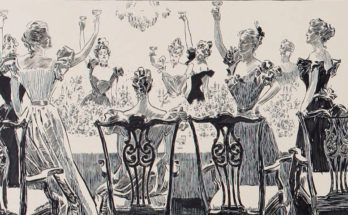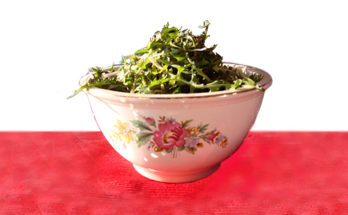
Mrs. Ellen H. Richards, early MIT graduate, was the originator of the Domestic Science movement in the early 1800s. But in the late 1800s, if you threw a spoon at Richards, it would be caught by Mary Hinman Abel. They were the “I bow down to you” ladies in the late-1800s because of their revolutionary work establishing The New England Kitchen for people in need of inexpensive nutrition. After The New England Kitchen, Mary Hinman Abel continued working in nutrition and domestic science, although by the 1900s her true revolutionary work was winding down. Scroll to text beyond the photos at “The New England Kitchen” [theclio.com] for a hint of what the crusade was about.
Mary Hinman Abel was born in upstate New York in 1850 and received a B.S. from Elmira College. She taught high school in LaPorte, Indiana, and was on the Education Department of the American Social Science Association. Miss Mary W. Hinman wrote a paper in 1881 concerning perhaps her own high school students, Home Life in Some of its Relations to Schools. She was a thoughtful person, and when she married the principal of the school, John Jacob Abel [wiki] they moved to Baltimore, and then Germany where she continued her studies.
During her time in Europe, she studied nutrition at University of Strasbourg, and explored interests in community kitchens, private enterprises and the institutions of the Volkskuche of Germany, and Forneau Economique of Paris. In 1888 she entered a contest for an essay in nutrition sponsored by the American Public Health Association. Her essay was so advanced that the committee cancelled second prize! The first prize was $500 contributed by Henry Lomb of the Bausch & Lomb company. The title of her essay became a book, Practical Sanitary and Economic Cooking adapted to Persons of Moderate and Small Means, [google books] that became a reference book to cooking schools, and held the guideline for the first community kitchen in the States.
Ellen Richards, founder of the Home Economics movement was one of the judges in the APHA contest. Inspired by the essay, Richards asked Mary Abel to work with her setting up the ideals set forth in the book via The New England Kitchen. Mary lived in Baltimore but moved to Boston to establish this community kitchen that opened January 1890. The project was initially funded by Mrs. Quincy A. Shaw, as it was her belief that good nutrition for the poor would assist in delivering people from drink. Other more questionable ideals were that by going to community kitchens, census agents and the labor bureau would have more access to the poor. Success seemed imminent when they won contracts to feed Boston students nutritious hot lunches. The kitchen ran for two years on philanthropy before being self-sustaining.
At that time the poor and working families spent 50% of their income on food, and “sewing girls” had a diet of cheap foods at restaurants supplemented with cakes and breads from bakers. Nutrition was minimum. Since the 1850s Boston philanthropists had been creating industrial arts training for children to give them employable skills, including cooking for girls. Another benefit was that the families could eat better at home. The New England Kitchen in the 1890s was in line with this tradition. The community kitchen trained cooking students, while offering to the public scientifically-calculated nutritious food at low prices. As planned, Mary left Boston after six months, once the kitchen was established. The same year, Mary Abel and Ellen Richards wrote, The Story of the New England Kitchen, Part I and wrote Part II in 1893.
While her vision of creating a self-sustaining kitchen did not materialize in the long run, it generated tremendous excitement within both Boston philanthropic and cooking communities.
Because of their work with The Boston Kitchen, Ellen Richards and Mary Abel were asked to manage the Rumford Kitchen at the Chicago’s World Fair [rumford.com] in 1893.
The Boston Kitchen is how Mary Abel is best known, yet she accomplished more restful advancements. In 1908 Mary Abel was a founding member of The American Home Economics Association [today called American Association of Family & Consumer Sciences] becoming editor of The Journal of Home Economics. She gave talks for clubs on nutrition and food, including “Recent Developments in Household Economics,” and wrote articles including “The Habit of Salad Eating,” “The Training School for Servants in Vienna,” “The Vegetarian: Vegetable food from the scientific point of view–Fats required,” and was a contributor to The Journal of Home Economics. She cared deeply about methods of teaching home economics in many forms, including improving awareness of orphanages that practiced unjust training in domestic science where no girl got the big picture of what her tasks meant, which served orphanages more than students.
In the early 1900s Mrs. Mary Hinman Abel wrote USDA bulletins including, “Sugar and its value as food,” “Care of Food in the Home,” and “Beans, Peas, and Other Legumes as Food.” She co-authored “The Science of Nutrition. Treatise Upon the Science of Nutrition” with Ellen Richards and Wilbur Atwater [wiki]. In 1921 she wrote, “Successful Family Life on the Moderate Income: Its Foundation in a Fair Start. The Man’s Earnings. The Woman’s Contribution. The Cooperation of the Community.” [google books] She dedicated the book to the Memory of Ellen H. Richards.
Mary and her husband John met when she was a high school teacher in Indiana. In 1883, after their marriage the couple moved to the country of John’s birth, Germany. They both went to the University of Strasbourg. They had a boy and girl while there and only the boy survived. They returned to the States circa 1888 and had another son in Michigan in 1891. Her husband taught at the University of Michigan, and in 1893 he became a professor of pharmacology at Johns Hopkins University School of Medicine in Baltimore, MD. Later he chaired the pharmacology and physiological chemistry departments and is known now for his groundbreaking research, including making dialysis machines possible. Mary and John Abel died 5 months apart in 1938.


